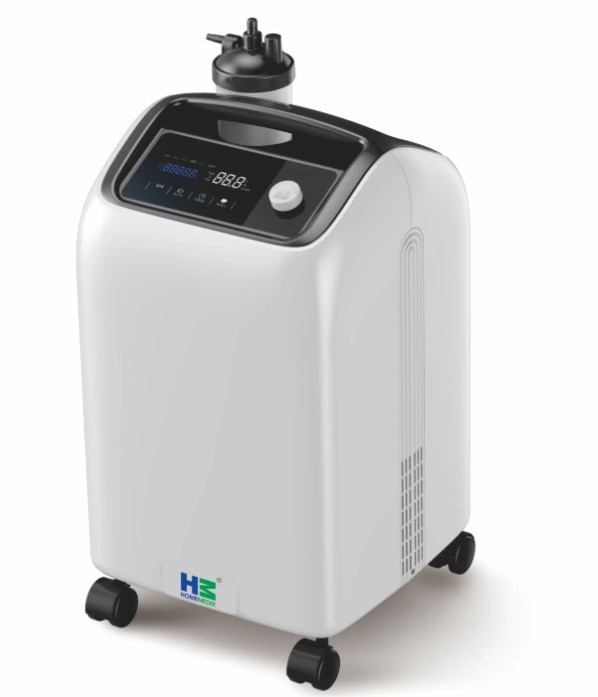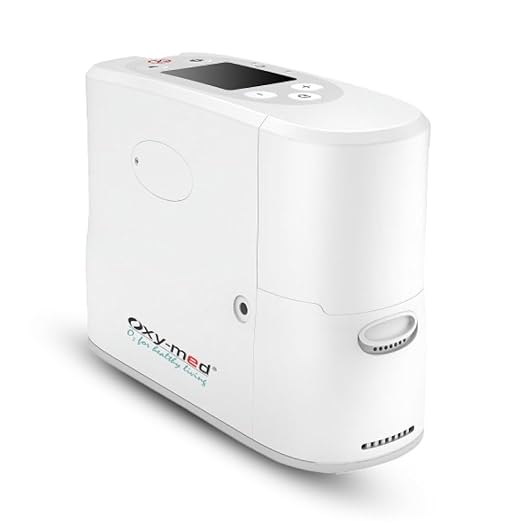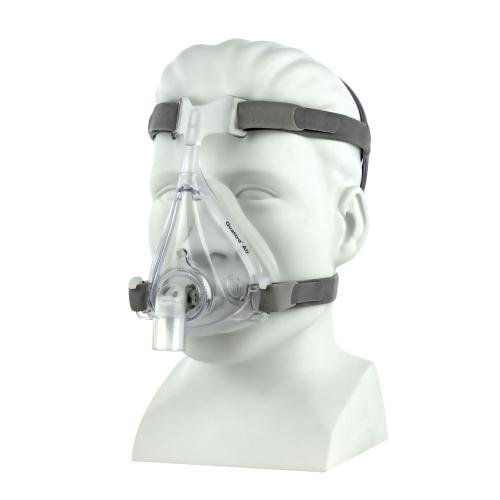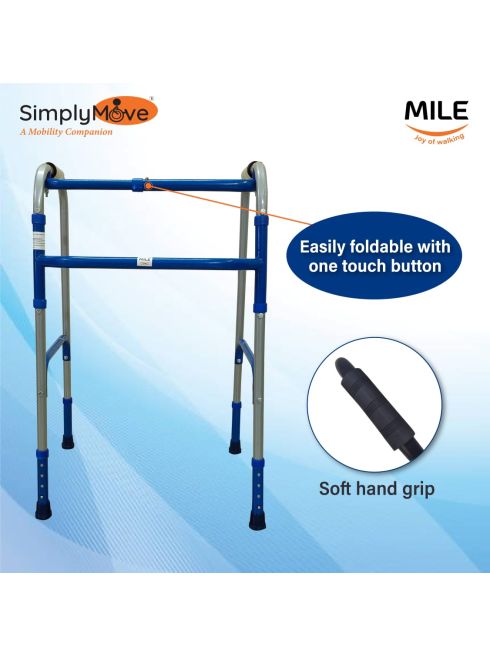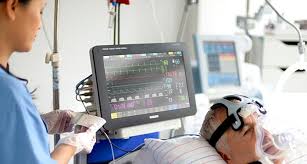Telemedicine simplifies the access to accurate healthcare services for patients. It caters to remote healthcare services and allows users to fill the gap between them and healthcare providers.
With this process, a user can contact physicians, specialists, nurses, professionals, and doctors via virtual visits, phone calls, consultations, or messaging.
By using telecommunication techniques, telemedicine changes the environment of the healthcare system. It results in healthcare services becoming more patient-centered, accessible, and effective. It enables users to control their health. The healthcare system can be impacted by all of this working together.
Moreover, the telemedicine app development domain has also seen hype in the last few years. By give-and-take relations with a healthcare software development company, you can easily build a telemedicine app for your business.
The main surge in this domain emerged in the COVID-19 pandemic. Digital health facility is highly leveraged since. Here, we will see how telemedicine impacts healthcare, its pros and cons, and much more. So, let’s dive in and learn more!
What is Telemedicine in the Healthcare domain?
Telemedicine is called telehealth services. It provides healthcare services remotely over any technology being used.
Providers use telehealth to conduct examinations of patients and provide them with suitable treatment without them visiting the clinic or hospital physically. So, patients can meet the doctor and get their prescription virtually, from their comfort zone.
In a telehealth session, users (doctors, patients, and healthcare organizations mainly) have to download the app or have a telephone conversation on the number. A healthcare professional will connect with you first. You can provide your electronic health record (EHR) to them, and based on that, they will prescribe you relevant medicines virtually.
As per the evaluation of healthcare providers, protected health data, and the virtual visit will end with modern medical information like prescriptions, follow-ups, etc.
Benefits of Telemedicine
Here are certain benefits of using telemedicine
Treatment at home
Telemedicine has upgraded healthcare services by adding convenience factors to them. Now patients do not have to leave their homes for small matters to see a primary health physician.
They can sit in virtual waiting rooms at the convenience of their home enabling patients to get essential consultation without physically visiting a clinic.
The widespread usage of telemedicine encourages patients to use EHRs, enhancing their overall healthcare experience. They can feel more comfortable seeking telehealth, fostering accessibility and convenience.
It’s not just general healthcare services, but also caters to specialized fields like dermatology and mental health. Telemedicine also broadens opportunities for healthcare professionals and medical specialists, improving overall service experience.
During the pandemic, virtual healthcare services became crucial for managing the dangerous conditions of patients. With users locked in their homes, virtual visits were the preferred mode of gaining access to healthcare services, ensuring continuity of care while staying at home and following COVID-19 guidelines.
The healthcare domain swiftly adapted to the growing demands of the pandemic, investing in modern healthcare by developing telemedicine services. This approach underscores a commitment to modern and patient-centered care in an ever-evolving healthcare realm.
Secure and Private Consultation
There’s a revolution in healthcare delivery through telehealth. But its success depends on other things along with data backup.
Primary physicians must prioritize compliance with relevant laws and protocols to guarantee the patient’s data safety.
Medical professionals who are well-versed in HIPAA rules must adhere to users when leveraging online patient portals for telemedicine. Conformity with federal laws ensures a safe environment for patients, but getting clarification in a cybersecurity audit can give them more peace.
By using strong security measures and adhering to legal things, healthcare providers gain trust & confidence in users seeking medical services online. Once your app fails in security, it may lead patients to think that their medical records are unsafe, resulting in the avoidance of using telemedicine services.
Using secure telehealth is an invaluable service for rural areas where mental and physical health concerns are common. So, prioritizing security concerns in telehealth will initiate seamless access to healthcare for every end-user.
Modern Technology
The growth of telehealth underscores technology’s role in healthcare, attracting healthcare firms to invest in technological updates. However, it’s not just about the healthcare tools being utilized; it’s also about strengthening the technology structure.
Failure to provide modern security poses strong risks, compromising whole patient portfolios and storing sensitive data like personal details, insurance records, medical histories, etc.
While bigger healthcare organizations prioritize security, smaller and independent companies should also ramp up such efforts in this area. Securing patients’ data should be important just like ensuring their physical health.
Ultimately, the healthcare domain must prioritize safety and a modern tech stack to modernize systems effectively. Technological innovation should be guided by a strong commitment to patient care, bringing up a safer and more efficient healthcare environment.
Generating More Opportunities
Telehealth has become a game-changer in the healthcare sector in terms of cost-effective factors. It’s an answer to the debate of affordable medical care by building promising solutions. Using telehealth, accessing healthcare services has become democratic allowing users to retrieve necessary treatment at just a fraction of the cost of in-person appointments.
Telehealth consultations get substantial savings, that can range from 90-120 dollars/appointment. These savings are increased when considering the side expenses associated with time and emergency resource costs.
This modern methodology improves affordability and increases healthcare access to previously underserved populations. It is bringing transformation in medical accessibility.
With the maximum adoption of telehealth technology, many companies are growing in usage to deliver better healthcare solutions to patients globally.
Remote Patient Managing and Monitoring
One of the top reasons why telemedicine impacted healthcare is remote monitoring, it provides:
- Improved patient convenience by minimizing the frequent in-person visits to healthcare centers.
- With remote monitoring, healthcare access is enhanced for rural or individuals who are homebound.
- Enables easy detection of health complications
- Provides easy solutions for ailments
Additionally, this technology provides virtual consultations and minimizes healthcare expenses. It fosters better communication between patients & healthcare professionals even virtually. Overall remote patient monitoring is a total game-changer in modern healthcare.
Primary Changes made by Telemedicine in the Healthcare sector
- Equitable Reimbursement: Previously, one of the major drawbacks of adopting telemedicine was the inconsistency in reimbursement compared to in-person visits. However, in the last few years, many states have enacted legislation mandating insurance firms to reimburse telemedicine services at equivalent rates. This shift in reimbursement policies has made a noteworthy update in the healthcare sector.
- Improved Telehealth services: In many states like NY, California, etc., an expanded scope of telemedicine services is offered. It opened a wider range of healthcare services and specialties for patients via telehealth, such as physical therapy and mental health counseling.
- Updates in Licensure: Modern licensure models such as IMLC (Interstate Medical Licensure Compact) enable healthcare professionals to practice healthcare services across different lines without obtaining multiple licenses. In addition to telemedicine, licensure updates have expanded access to healthcare services for patients, especially from rural areas.
- FDA Regulations: At the current time, the FDA has seamlessly adapted to the evolving landscape by building guidelines for using remote monitoring systems and telehealth software, enhancing security, and building more trust in these technologies.
- Privacy and Safety Regulations: Having an increased reliance on telemedicine, concerns and issues regarding patients’ data privacy and security are also improving a lot. HIPAA- Health Insurance Portability and Accountability Act complies with legislators in implementing new rules to ensure the security of all medical information stored.
How are Telemedicine Services Used?
The department of HHS says that there was an expansion in the usage of virtual visits in 2019 and 2020 because of the COVID-19 pandemic. And ⅓ rd of the visits were with different medical specialists.
Telemedicine has become an important system for the healthcare industry during the pandemic. It minimizes contact to avoid the health risks of infecting others with the disease of other patients. It also reduces the number of visits of patients in most of the healthcare departments. Here are several telemedicine uses that were beneficial in covid-19 pandemic:
- Easy tracking of contact
- Screening and assessing for the symptoms of the COVID-19
- Use of remote monitoring devices for monitoring signals of patients’ recovery.
- Unique care of pandemic patients hospitalized in the healthcare unit
- A single healthcare person monitoring different patients at one time
- Improved testing capacity
- Prevents unnecessary department visits
Uses of telemedicine after the pandemic:
- Easy conducting of non-emergency follow-ups
- Taking health status like wellness visits and different vital signatures
- Counseling for mental nutrition and problems
- Prescribes medications
- Tele-intensive care
- Physical therapy exercise
Future of Telemedicine and Telehealth in the Healthcare Sector
While the modern impact of telemedicine on medicine is widely acknowledged, its future holds great promise. With the ongoing technological advancements. Telehealth revolutionizes the easy delivery of multiple healthcare services. It provides enhanced accessibility to medical care, particularly in underserved and rural areas, and eliminates the requirements for travel and long waiting times by enabling patient consultation with doctors from their comfort spot.
Additionally, telemedicine facilitates the monitoring of strong conditions using innovative devices that measure blood pressure and record strong signs.
This proactive approach enables early detection and ensures a better patient experience. Moreover, telehealth initiatives contribute to cost reduction in healthcare by minimizing hospital readmissions and emergency visits.
In the future, telehealth is positioned to play a critical role in shaping the domain of healthcare delivery. It makes it more convenient, accessible, and efficient for individuals globally.
Healthcare Industries Benefiting from Telemedicine:
Primary Care:
Telemedicine has revolutionized primary care by providing patients with convenient access to healthcare services from the comfort of their homes. Virtual consultations allow primary care physicians to diagnose and treat a wide range of non-emergency medical conditions, reducing the need for in-person visits and minimizing wait times for patients.
Mental Health Services:
Telemedicine has been a game-changer for mental health services, especially during the COVID-19 pandemic. Virtual therapy sessions and counseling have enabled individuals to access mental health support remotely, eliminating barriers such as transportation and stigma. Telepsychiatry has also facilitated timely interventions for individuals experiencing mental health crises, improving outcomes and reducing hospitalizations.
Dermatology:
Telemedicine has expanded access to dermatological care, allowing patients to consult with dermatologists remotely for skin conditions such as acne, eczema, and psoriasis. Virtual dermatology visits enable timely diagnosis and treatment, leading to improved patient outcomes and satisfaction. Dermatologists can assess skin lesions, provide treatment recommendations, and monitor progress through telemedicine platforms, enhancing convenience for both patients and providers.
Chronic Disease Management:
Telemedicine has transformed chronic disease management by enabling remote monitoring and virtual consultations for patients with conditions such as diabetes, hypertension, and heart disease. Remote patient monitoring devices allow healthcare providers to track vital signs and health metrics in real-time, empowering patients to take control of their health and make informed decisions about their care. Virtual consultations also facilitate ongoing communication between patients and healthcare providers, leading to better management of chronic conditions and improved outcomes.
Hormone Therapy:
Telemedicine has brought significant advancements to hormone therapy, particularly for individuals seeking treatment for hormone imbalances and related treatments like HGH therapy, testosterone replacement therapy, and female hormone therapy. Virtual consultations with endocrinologists and hormone specialists enable patients to receive personalized treatment plans and ongoing monitoring from the convenience of their homes. Hormone therapy clinics offering telemedicine services have seen increased accessibility and patient engagement, leading to better outcomes and satisfaction among individuals undergoing hormone therapy.
FAQs
Impacts of telehealth on healthcare industry
Telehealth positively disrupts primary healthcare delivery. It cuts the gaps in access, reduces the burden on physical facilities, and offers different cost-effective options. It is reshaping healthcare into an efficient, tech-driven, and patient-centered system.
How telemedicine is changing healthcare
Telemedicine is reconstructing the landscape of healthcare, particularly by updating accessibility. By avoiding geographical limitations, telemedicine enables users to consult with healthcare people from anywhere, breaking down barriers in providing care. This process saves time and expenses associated with travel and also extends medical services access to rural regions, ensuring that patients in remote areas can receive the medical attention they require.
Explain the Pros and Cons of Telehealth
Advantages: Better access, convenience in accessing healthcare, minimized costs, and provides early detection and intervention.
Disadvantages: Limited in-person examination, technology barriers for certain people, and data safety and privacy concerns.
What are the popular examples of telehealth in healthcare
Telehealth has multiple apps delivering health care like remote monitoring, video consultations, and mobile healthcare apps. Virtual check-ups, chronic disease management, and mental health counseling are some of the notable examples that show virtual health and its scalability.
Does telemedicine and telehealth improve health outcomes
Yes, telehealth improves patient outcomes. Regular consultations, better medication adherence, & seamless monitoring to improve health management and satisfactory outcomes for treating chronic conditions.
Final Verdict
Now, it is necessary and proven that telemedicine and telehealth have a huge impact on the healthcare industry. Telemedicine has ushered in a modern era in healthcare, leaving behind geographical boundaries and building easy access to medical services for all users. Patients have benefited from greater convenience, minimized travel burdens, and better healthcare outcomes through telehealth services.
The COVID-19 pandemic accelerated the adoption of telemedicine, highlighting its importance as a crucial healthcare tool. However, challenges such as equitable access and data security issues remain to be addressed.
To fully harness the potential of telemedicine, healthcare systems must continue to innovate and adapt. Telemedicine is a passing trend and also is an important component of modern healthcare, offering a future where quality medical care is easily accessible with just a click.
*****




